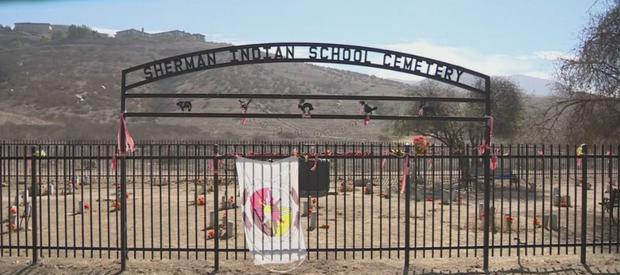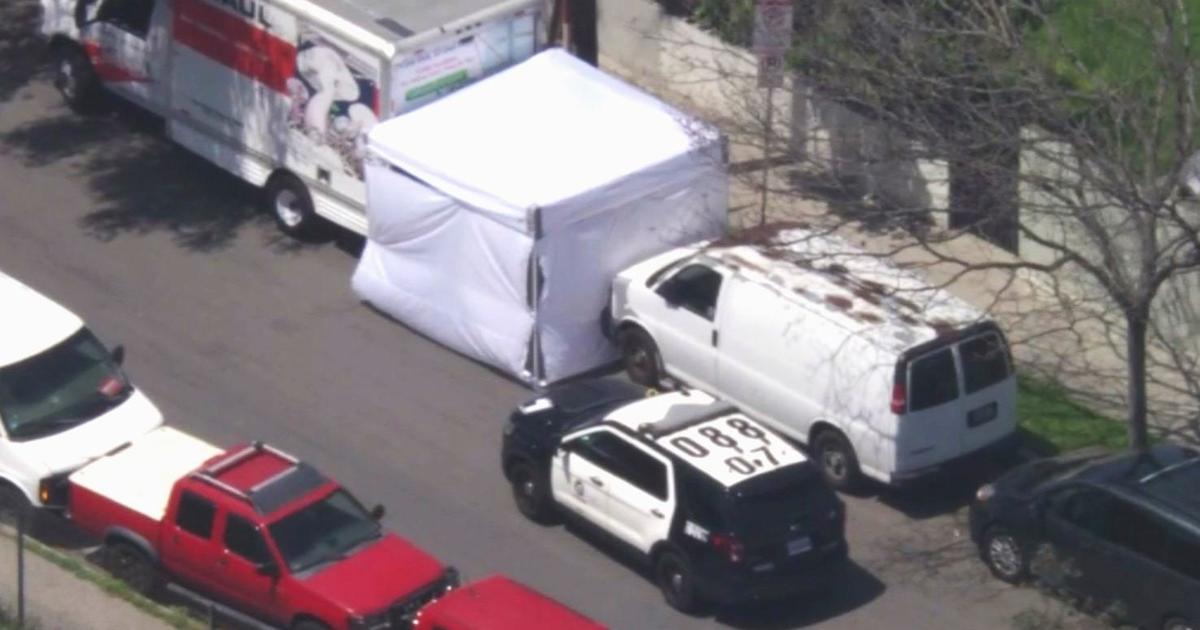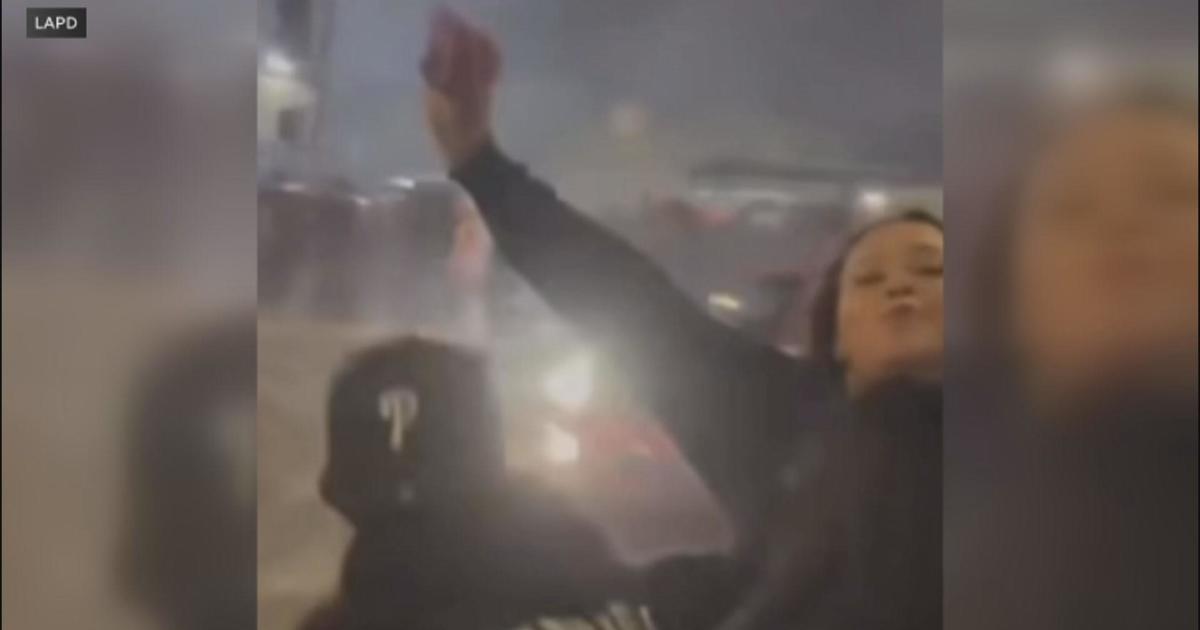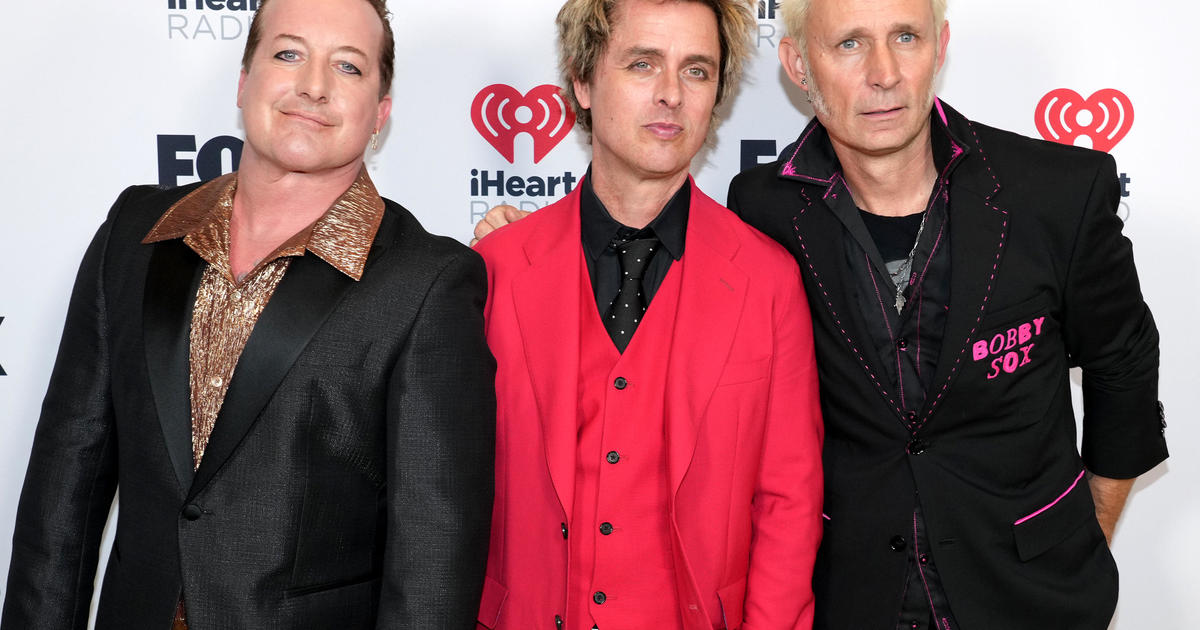California Bears The Painful Scars Of Native American Boarding Schools
RIVERSIDE (CBSLA) – For decades, Native American children attended federally-run boarding schools where they were forced to assimilate, an ugly truth in American history.
In June, U.S. Interior Secretary Deb Haaland announced a federal investigation into the troubled legacy and history of these Indian boarding school abuses.
Ten of those schools were located in California, including the Sherman Institute in Riverside.
Sixty-five Native American children who attended the Sherman Institute are buried at the Sherman Indian School Cemetery in Riverside.
"It's very emotional to be here," California state Assemblymember James Ramos (D-Highland) told CB2's Lesley Marin.
The Sherman Institute was one of more than 350 Native American boarding schools that were run by the federal government from the late 1800s to the 1970s. The goal of these schools was to assimilate Native children. As Capt. Richard Henry Pratt, who opened the first school, once infamously said in 1892, "Kill the Indian in him...and save the man."
"Anything Indian, anything culture, your language, your hair, your different style of dress, was forbidden," Ramos said.
Ramos' grandmother attended St. Boniface Indian Industrial School in Banning.
"They were then trying to change their language," Ramos said. "They were forbidden to speak their language. They were forbidden to speak anything Indian. But they didn't stop remembering, right, so they came back to the reservation and kept teaching, kept teaching those things. Others weren't so lucky."
Historians believe students attending the boarding schools were beaten, starved and abused if they spoke their native language.
"My grandmother, like many others, was raised to believe that being an Indian was a dirty thing, and something that shouldn't be talked about ever," said Amanda Wixon, assistant curator of the Sherman Indian Museum.
At the time, laws mandated Native American students attend the boarding schools.
"I've heard stories of sometimes, just going to a village and seeing what children are wandering around and saying, 'They're being unsupervised, we'll take them,'" Wixon said. "I've heard stories of rations being withheld unless they send their children."
Once students arrived at the schools, they were put to work. Academics, Wixon said, only made up about two hours of a long day.
"They are getting up at five, they're working until 10, there's as young as four," Wixon said. "And then there was also the very highly controversial outing program, which saw children going out into the local community, and working for local white Christian families, for low wages, in the interest of civilizing them."
Scholars estimate that by 1926, 83% of all Native American children attended the boarding schools. Wixon said that it's important to note not all students had harsh experiences.
"Some students were able to leverage their experiences and use some of the things that they learned -- in terms of like economics, agriculture, and all sorts of stuff -- and go back to their reservations and their communities and make a life for themselves, and maybe even sometimes improve the lives of their families," Wixon said.
Although many of the students who died are believed to have contracted deadly diseases, much is still being uncovered about what happened at the schools, including how many of the students struggled under a brutal system.
"Those that fought back, those that wanted to retain their language, they were beaten," Ramos said. "There was atrocities that happened. We think that there was beatings that took place so severely, that they ended up in the cemeteries, with no explanation to the families."
Today, only four federally run Native American boarding schools remain in the U.S. One is Sherman High School in Riverside. However, it has undergone a radical transformation.
"It became, basically, one of the few beacons of light, that now moves forward educational attainment in the Indian community," Wixon said.
"Even today, in Indian country, we have the highest alcoholism rates, the highest suicide rates, the highest areas of lack of attainment in education, I think it all goes back to the historical trauma that's never came forward to say this truly did happen to our people."
The federal investigation will involve using ground penetrating radar to determine what happened to children who never made it home.
The Sherman Indian Museum has already done a lot of work to compile the stories and experiences of Southern California Native American families. For more information on their work, click here.




